Why does my Kickflip stick to the front foot?
Because your flick's energy is parallel to the spinning axis.
You flick your board as hard as possible, but it sticks to your front foot and wouldn't flip while you can flip your board with your finger. This time, let's break down this "sticking problem."
Summary
Why does a kickflip stick to the front foo?
The sticking problem may happen when your flick's energy goes parallel to the spinning axis. You have to apply a vertical force to the x-axis (= kickflip axis) of your board. If you flick forward, you'll be turning your board around the y-axis (= forward flip axis) and makes your kickflip slower.
How strongly should you flick?
You don't need to flick so hard. You can tell how little energy it needs to flip, considering you can flip it with your finger. Flicking unnecessarily strongly may spin your board horizontally.
Simulation
Hit the icon to initiate 3d simulation.
Premises
Is it really because you have to flick harder?
A human leg is known to be roughly three times as strong as an arm.
How many times is it stronger than a finger? No telling, but it must be quite a lot.
So if you can't flip your board with your foot, you could be missing something. Don't forget to read other kickflip articles, too.
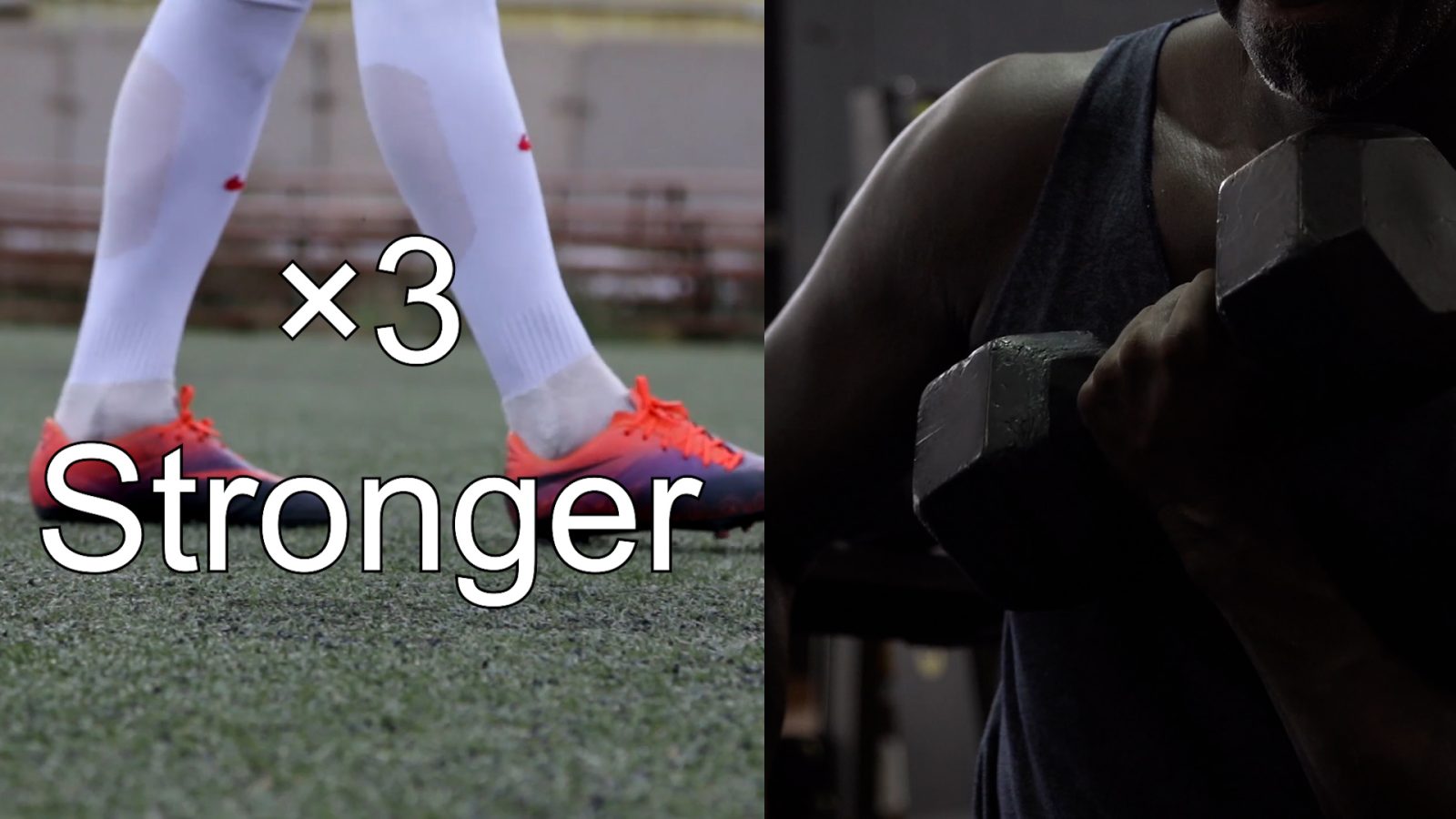
Review of the mechanics of kickflip
Apply a vertical force to the x-axis
Every object in this world, including a skateboard, has three spinning axes. Let's say the longest one is the x-axis, the one that connects the toe side and the heel side is the y-axis, and the other is the z-axis.
If you try to flip your board most efficiently according to the mechanics, the force of your flick should be perpendicular to the x-axis. You generate such a force by flicking your board's nose or somewhere around the beginning of it.

Flicking forward applies a vertical force to the x-axis
As you look closer, you can see your toe draws an arc and applies a vertical force on your board so that it flips most efficiently.
This is the most tricky part. You apply a vertical force on the axis by flicking forward.
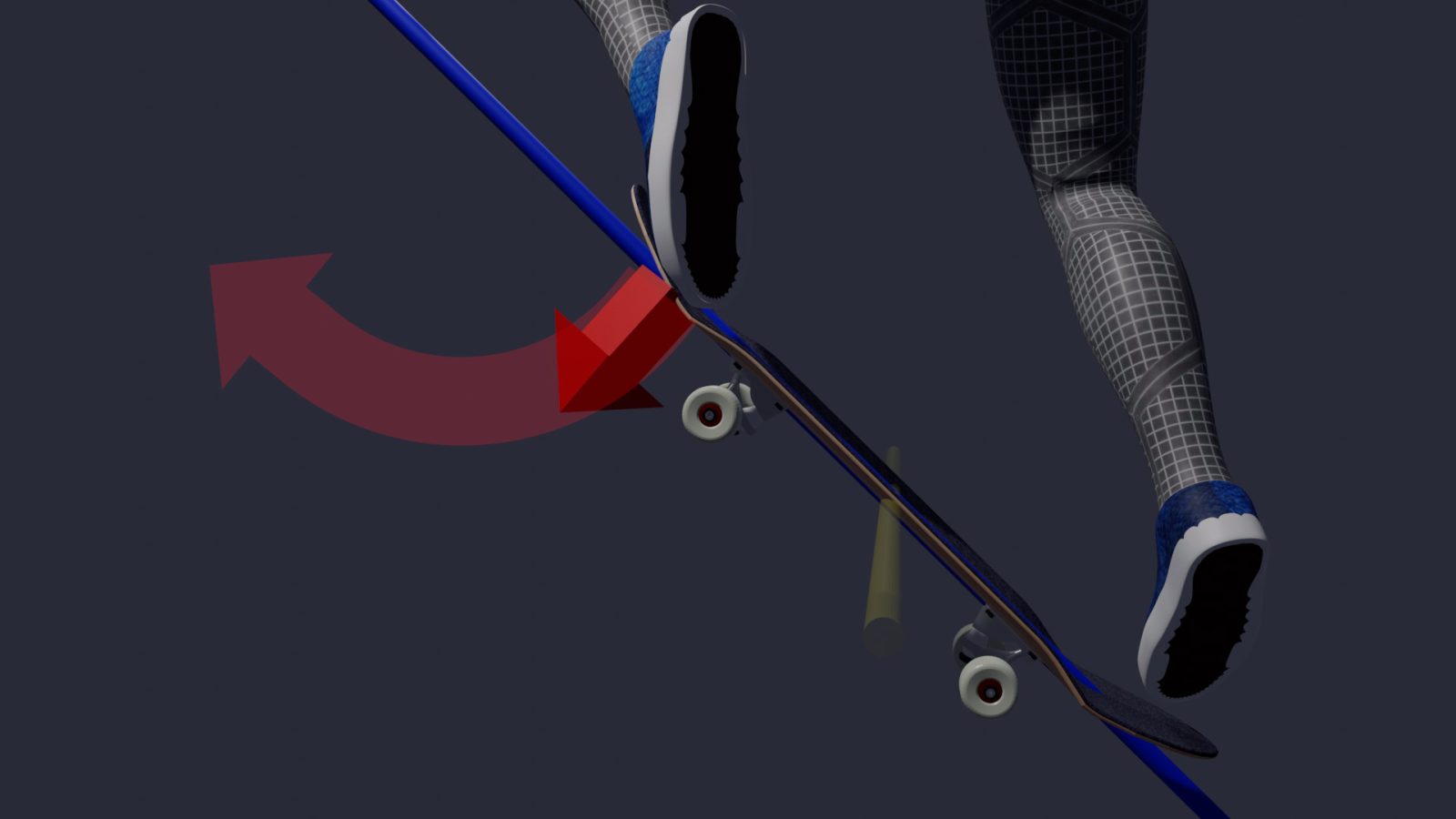
Problem
Why does the sticking problem happen?
The sticking problem may happen when the force goes parallel to the x-axis.
This changes the most dominant spinning axis from the x-axis to the y-axis and uses your flick's energy to rotate your board forward.
As a result, this weakens the spinning force of your kickflip and makes it feels like your board sticks to your front foot.
Further, you might catch your board upside down midair as the tail raises unnecessarily higher by turning around the y-axis.
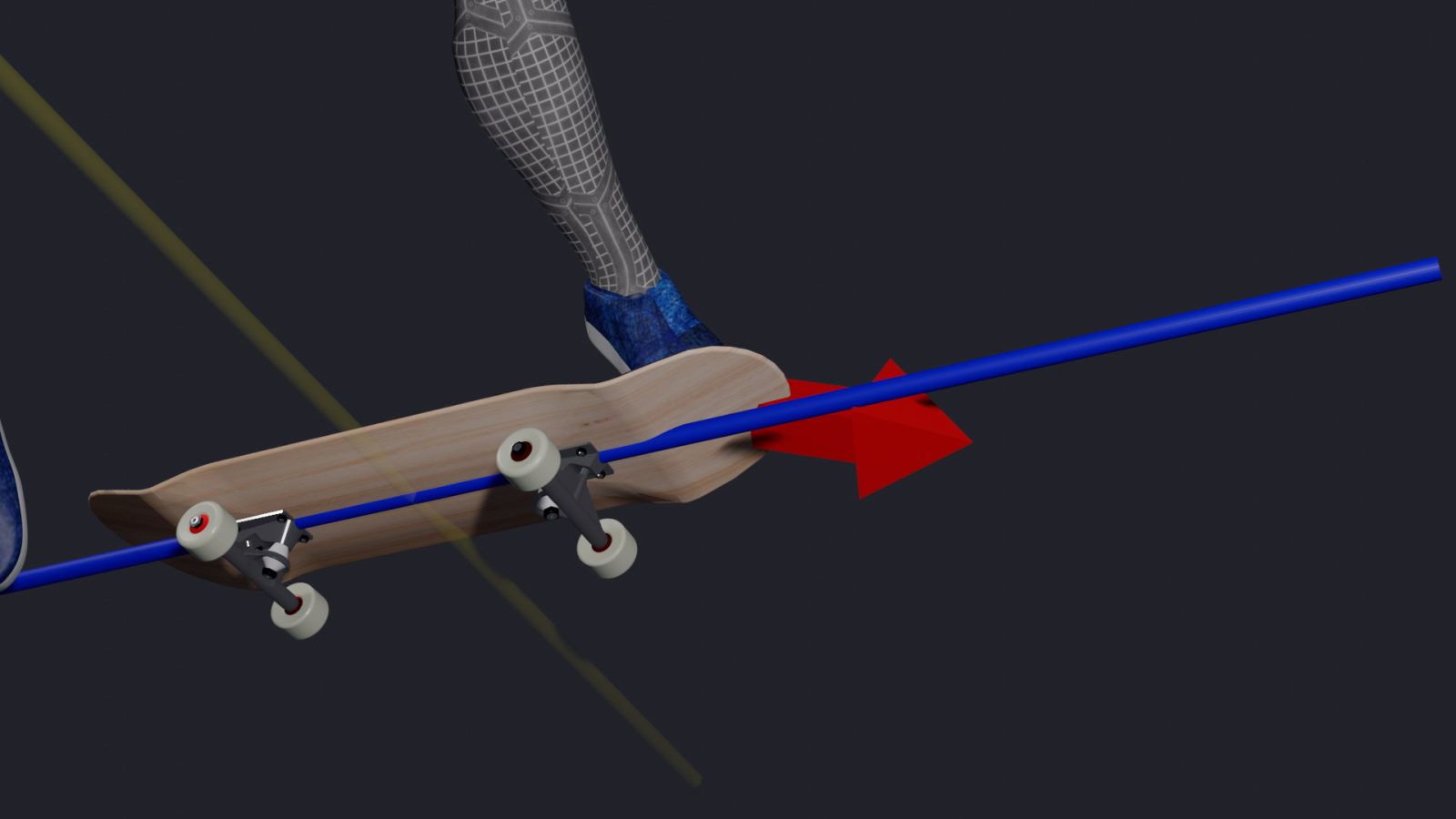
Should you flick down to generate a vertical force?
So does that mean you should flick down? As many people say, you should not.
Think about it this way: By flicking down, you may be able to generate a perpendicular force to the ground, not to your board.
By flicking down, you could only exert a slanted force on your board. In that sense, flicking down does not efficiently flip your board, after all.
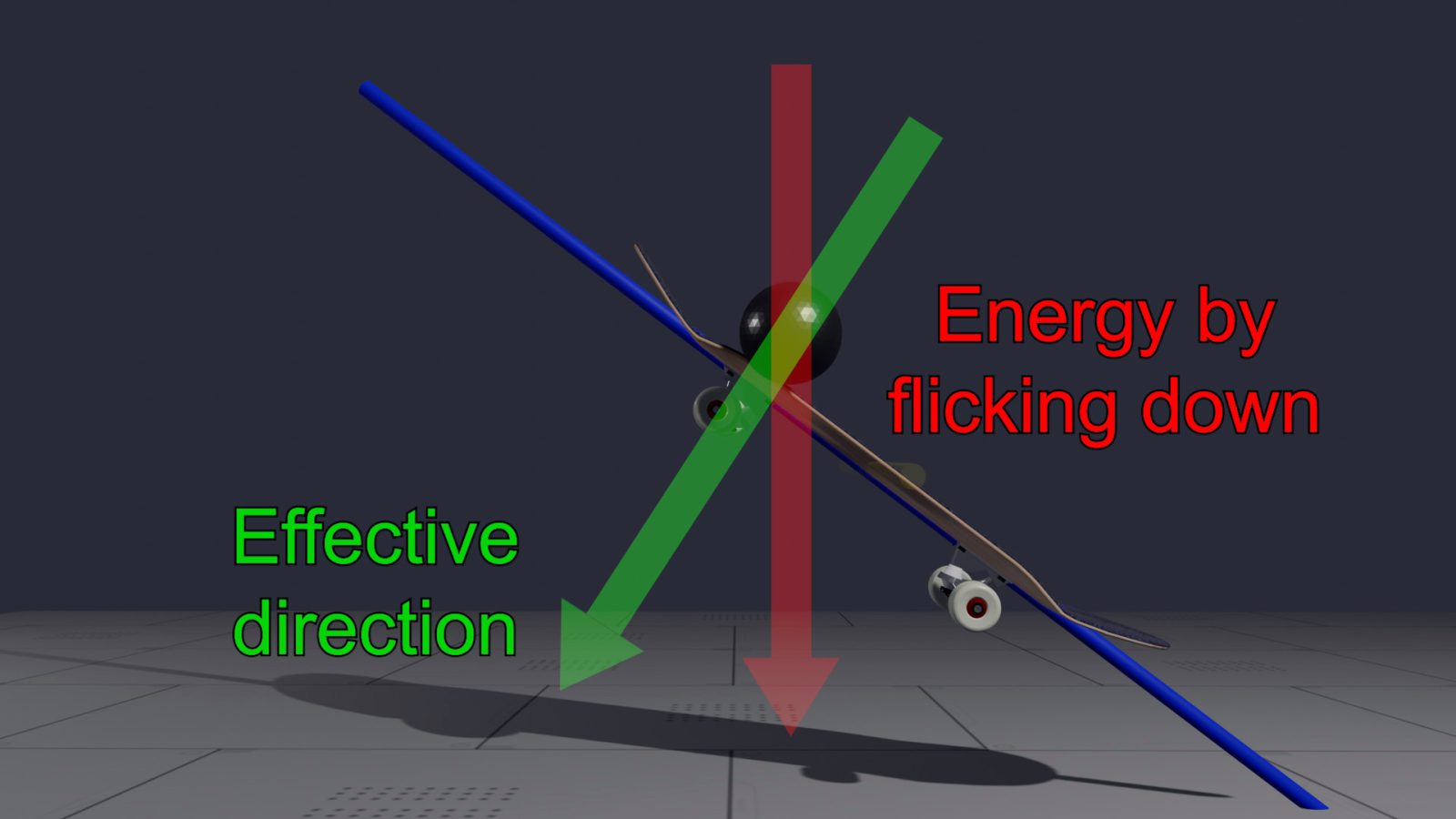
Common mistakes that could cause the sticking problem
When does the "sticking problem" happen?
Now that we know the importance of the spinning axis, let's see when the force of the flick gets closer to parallel to the x-axis. Two common mistakes may cause this problem:
- When you raise your body too high.
- When you're flicking too far.
Let's take a deeper look at them one by one.
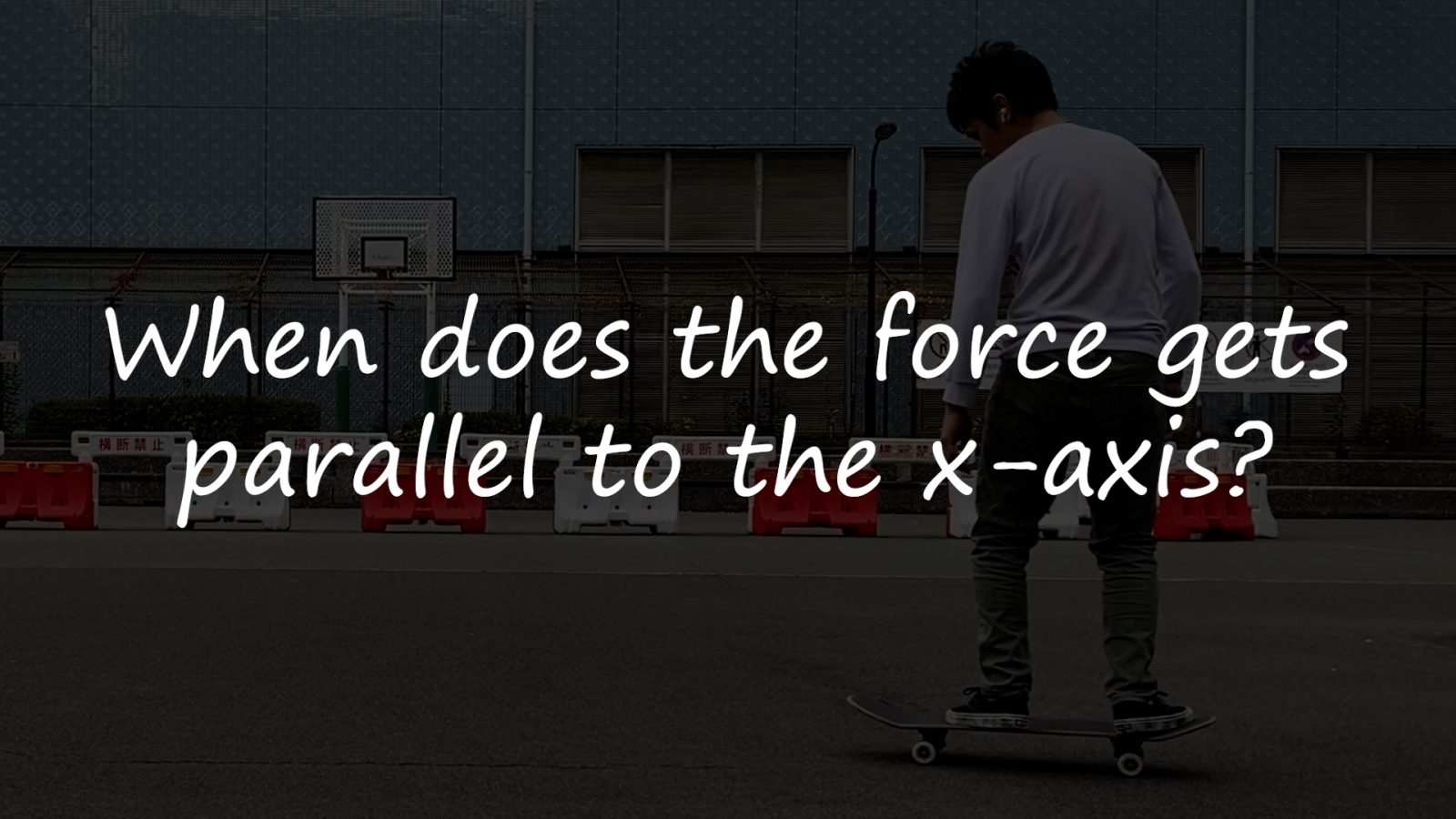
1. When you lift your body too high.
If you lift your body too high without tucking up your front knee, your front foot won't be able to draw the arc.
It tends to go horizontally straight instead, making it virtually impossible to exert a vertical force on your board.
I try to avoid jumping up unnecessarily high, so I can tuck up my knee more efficiently.
If you want, you can jump up as high as you want, though. Make sure to tuck up your knee close to your chest, then.

2. When you flick too far.
You may often flick too far (somewhere you can reach when you extend your leg) because you can see where to flick in front of you.
With your front foot extended, you won't be able to generate enough vertical energy around the x-axis. Your front foot needs to stay close to your center of gravity to exert a vertical force to your board.
If you simply push your board with your extended front foot, you'll wind up lowering the nose as your board turns around the y-axis.
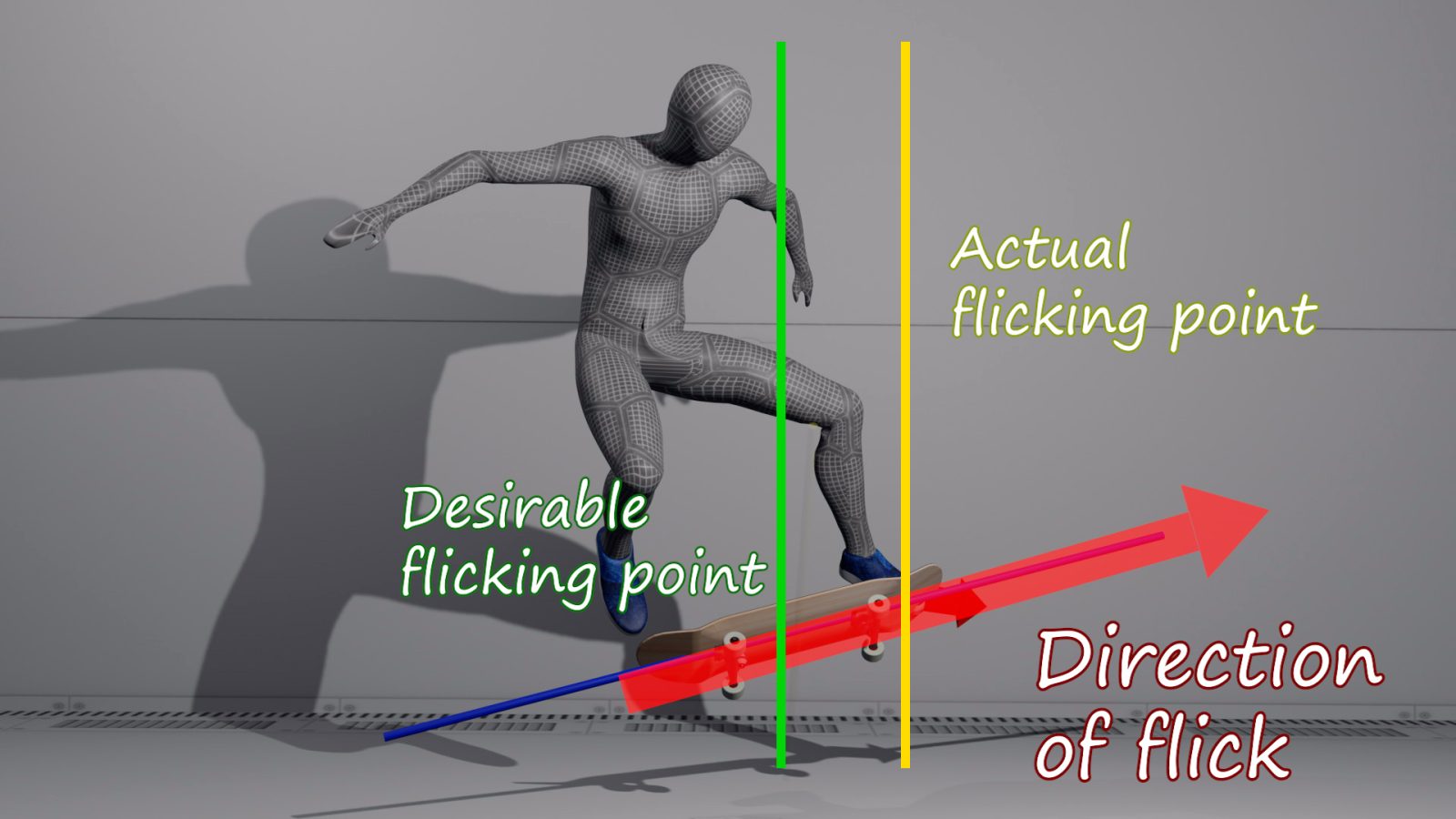
Things to keep in mind to avoid the sticking problem
To prevent the sticking problem, remember to "avoid lifting your body unnecessarily high" and to "avoid flicking too far," which is easier said than done.
To get used to the sense of the flick, try practicing flicking while stepping off your board before trying to land it with both feet. Let's take a closer look at the practice step below.

Practice
Importance of practicing flicking
It is essential to practice in the right way to acquire the sense of a good flick. Without trying to land with both feet from the beginning, you can easily tell if you're flicking too far or if your body is too high.
If you try to land with both feet when you just want to acquire the feeling of a good flick, you must use your whole body and consume a lot of energy. And as you can't flick effectively, you'd land primo or upside down, which increases your fear. Then your mind makes you want to jump higher to stay away from your board.
The more you try, the stiffer your body becomes due to fear and fatigue, and the trick becomes harder.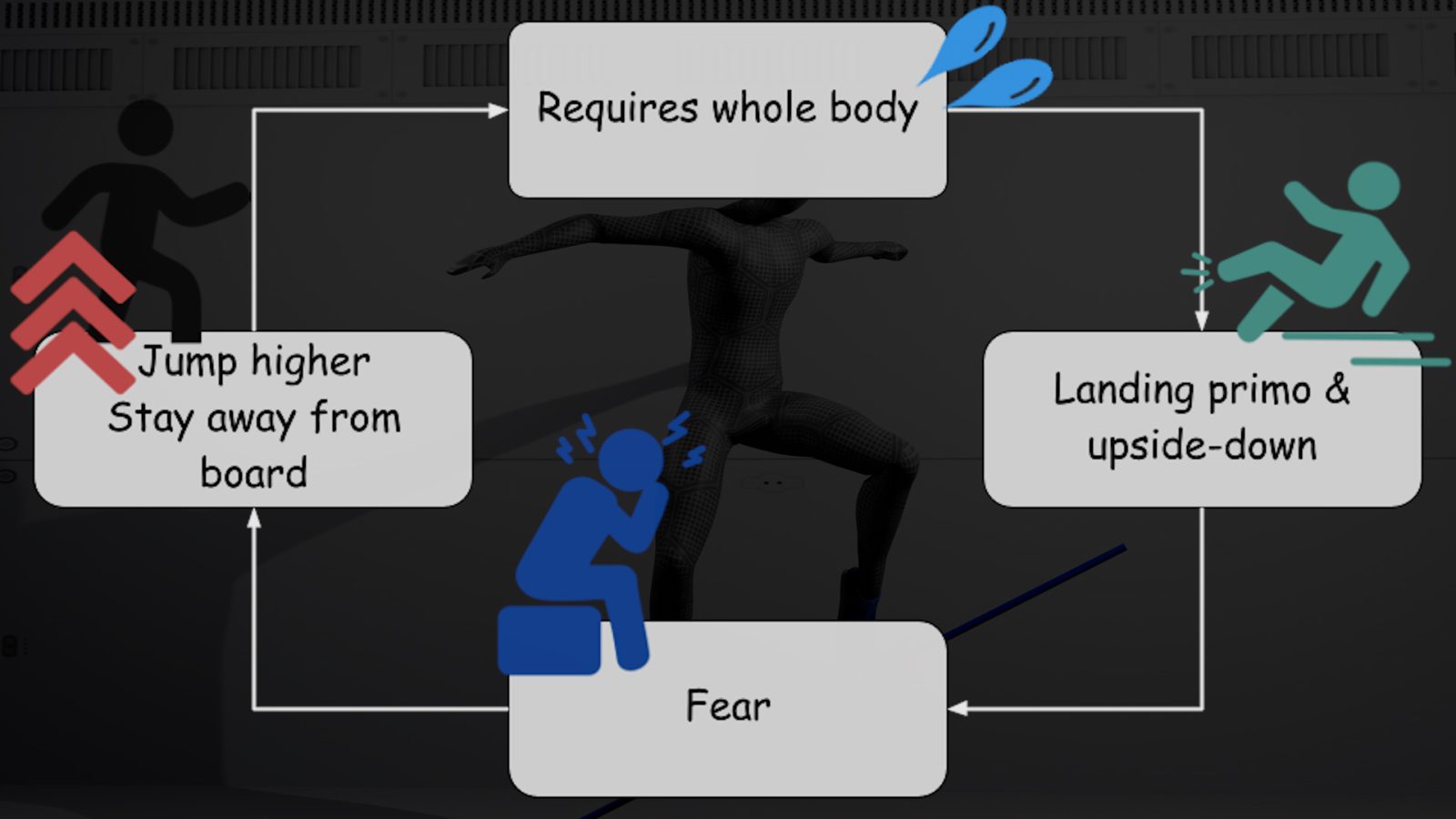
Foot placement
Place your feet in a kickflip position. It's best to find the most suitable foot placement yourself as our body structure and ankles' flexibility differs among us.
For reference, I put my front foot slightly over the front bolts and my back foot on a bit toe side of the tail. Place your feet where you feel comfortable and try the following steps.

Step #1 Crouch down and start lifting your body
Make sure to avoid letting your body go up too high and lift it to the same height as you were standing. Remember, allowing it to get higher than that makes it harder to draw the arc.
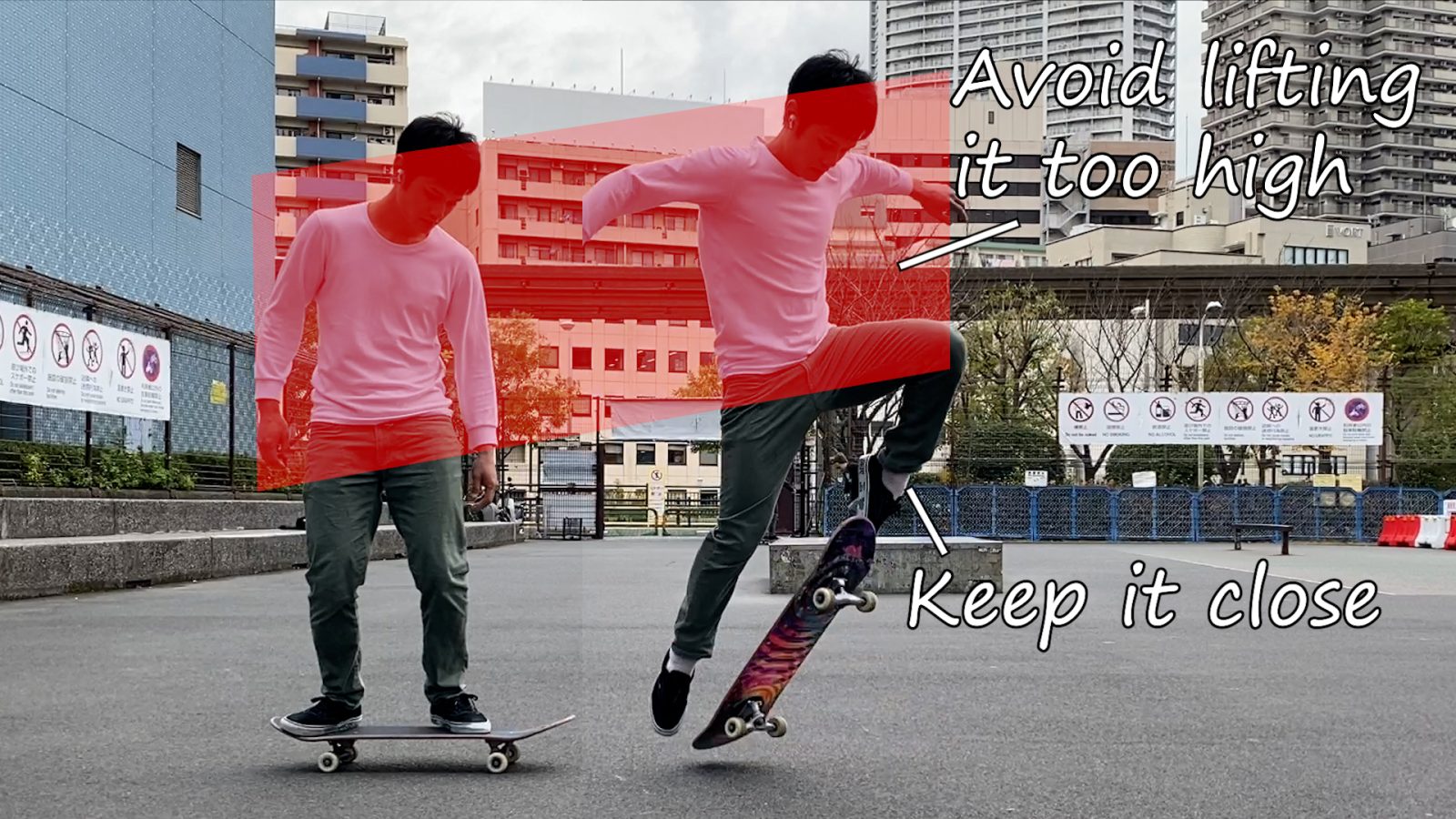
Step #2 Pay attention to the weight distribution
I usually have my weight over my front foot by the time I flick. Leaning too far back widens the distance between your flicking foot and your body's center of mass, making your flick parallel to the x-axis.
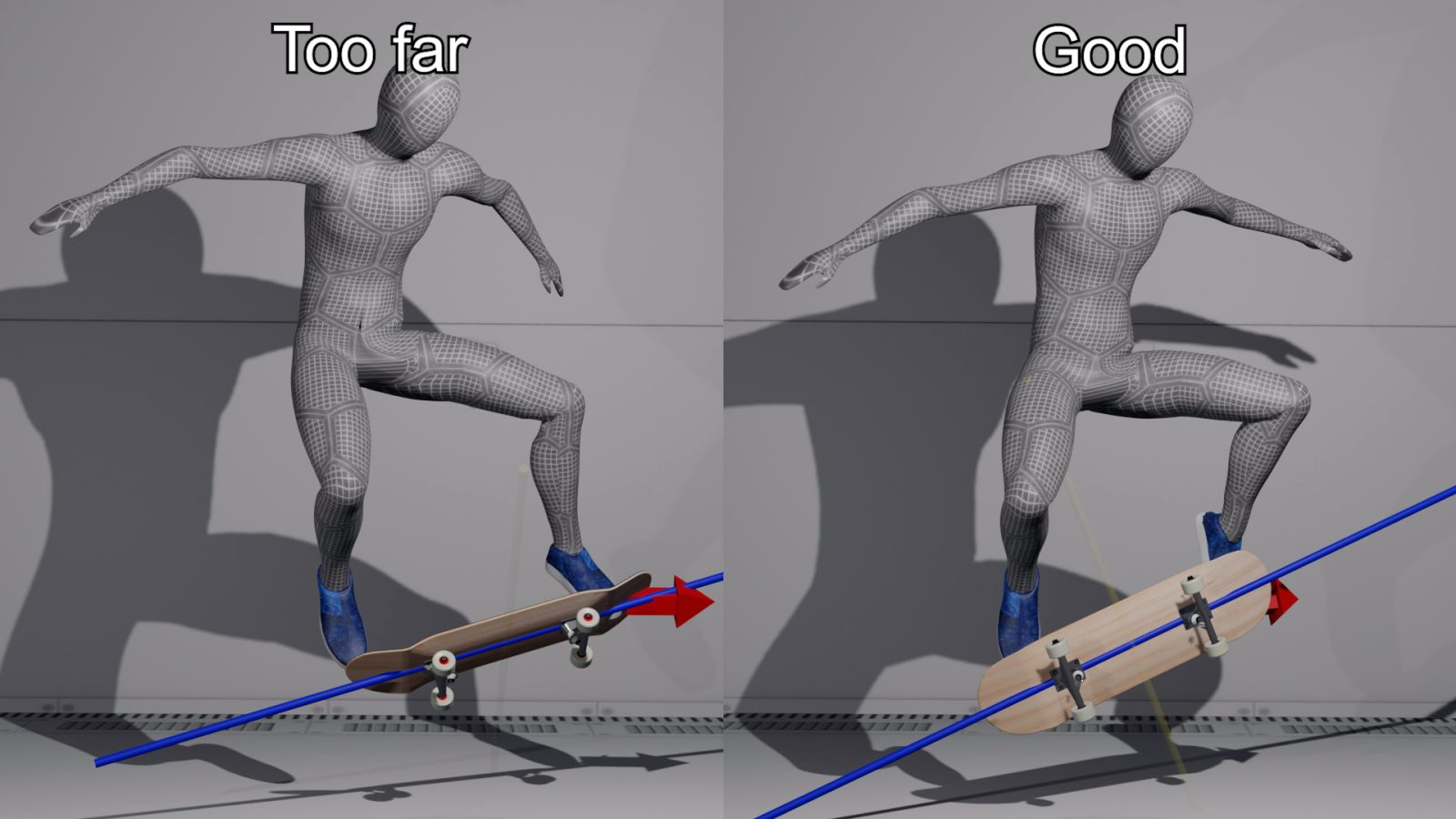
Step #3 Flick your front foot
Flick your front foot. Keep your flick quick and compact. Remember, you can flip your board with your finger. As long as you give the x-axis a vertical force, you don't need to flick so hard after all.
Flicking unnecessarily strongly makes you lose your balance and may spin your board horizontally.
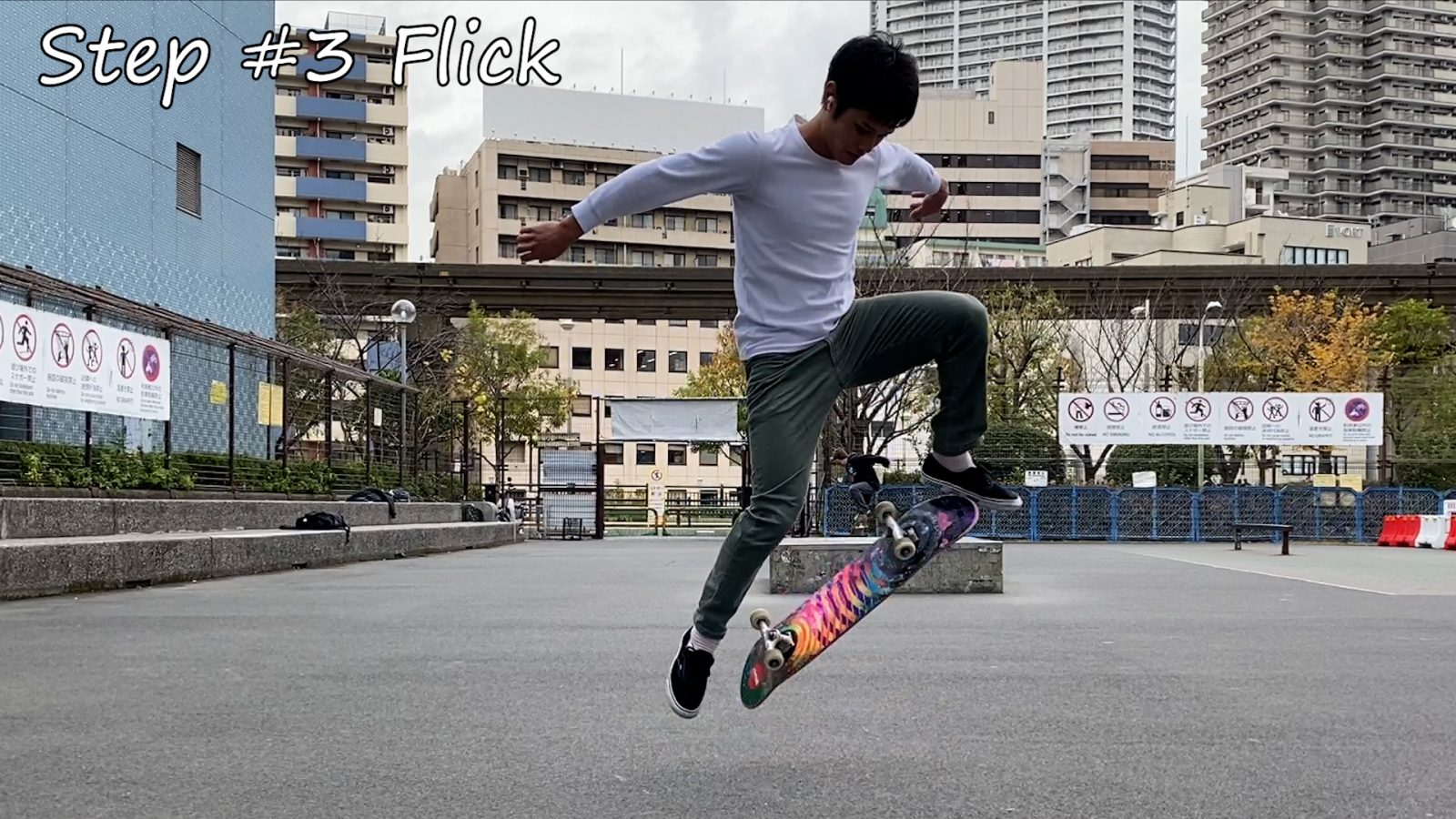
Introduction of whythetrick.io
A platform that allow you to convert your motion into a 3d animation with ease
Everyone should be able to analyze their motion objectively somehow. But making 3D models, as I do, usually takes up to two weeks to make one. Imagine, if you could convert your motion digitally and easily, not only would you be able to use the information for your personal growth, but you'd also be able to create a collective knowledge base by sharing your data with others.
In other words, we need a platform that can bind our individual commitment together to help us improve our personal skills and to accelerate the evolution of the entire human race.

To make that happen, I present you whythetrick's AI-based automatic motion converter. Simply select or drop a file, and the system automatically converts your video into a 3D animation. You can browse it on a web browser and change your model's angles, play speed, display grid lines, etc.
The system's still in the development stage and might contain errors, and it might not be 100% accurate. But hopefully, this helps you learn something new.
That said, I need support from every one of you. I need live data in order to improve the system as well as qualitative feedback. Please try using the system and let me hear what you think.


 Convert your video into 3D
Convert your video into 3D Facebook
Facebook Twitter
Twitter

